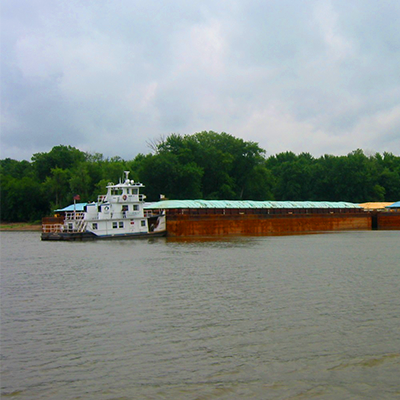WE NEED THE ILLINOIS WATERWAY
Ultimately, a well-maintained, functional Waterway benefits users throughout the food system and transportation chain. More than 580 facilities ship and receive commodities delivered via the Waterway. Soybeans and corn make up the largest percentage of goods that travel the Waterway, but traffic transporting cement and cement products follows closely behind.
Improvements to the entire aging system must be addressed at the same time. Much of the initial construction was completed in the 1930s, meaning the system is antiquated, at best. Furthermore, a number of locks are not adequately sized to meet today’s shipping needs. As a result, longer tows must be split and go through the locks in two separate operations. This can double or triple lockage time, raise transportation cost and increases wear and tear on lock equipment.
INTERDEPENDENT SYSTEM
While it would be much less complicated to address a single lock or two at a time, the whole system is interdependent—simply updating a few locks along the system would increase bottlenecks and not alleviate the equipment or size challenges. It would be the equivalent of replacing a single tire on a car with a broken axle.
It is clear that current Waterway operating and maintenance practices are not sufficient to guarantee a bright future for the reliable delivery of goods. The argument is strong—and getting stronger—for interested parties to join forces in collaborative efforts and drive innovative solutions to infrastructure challenges.
